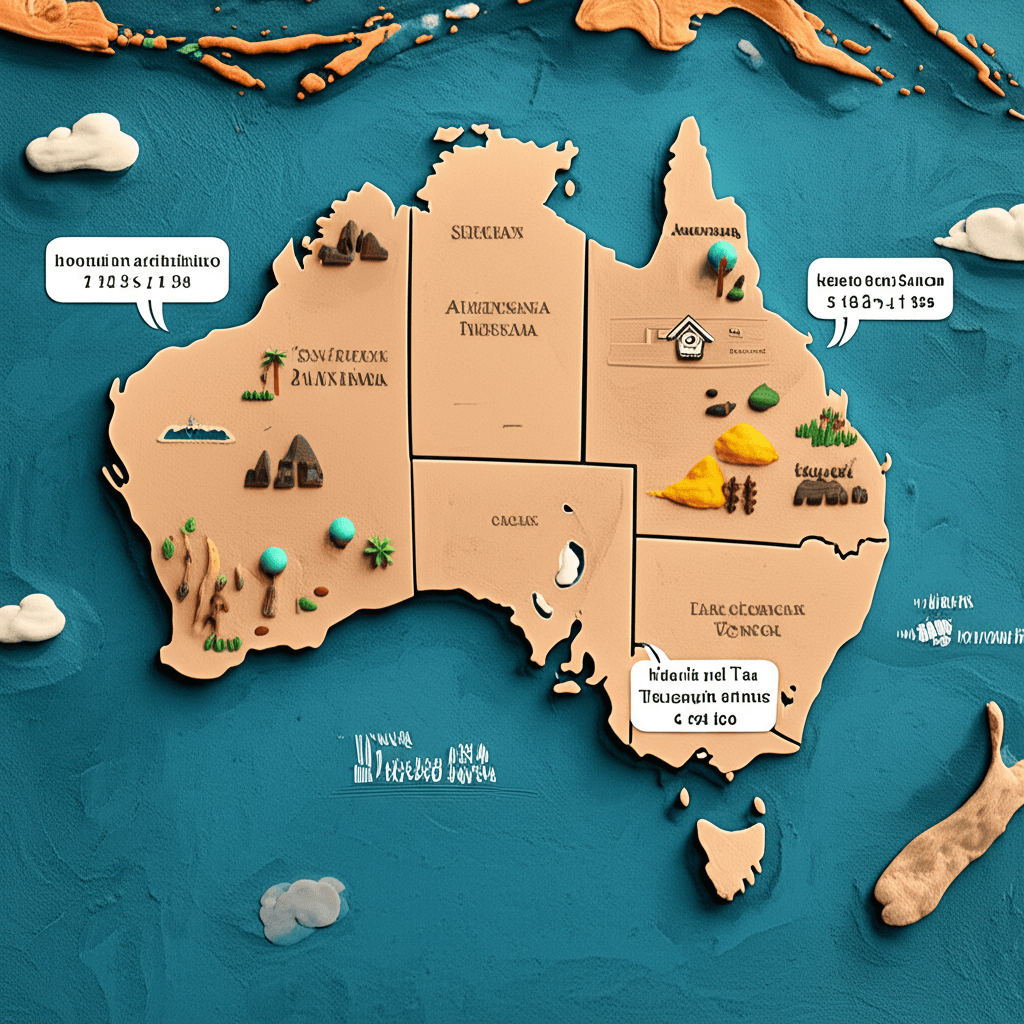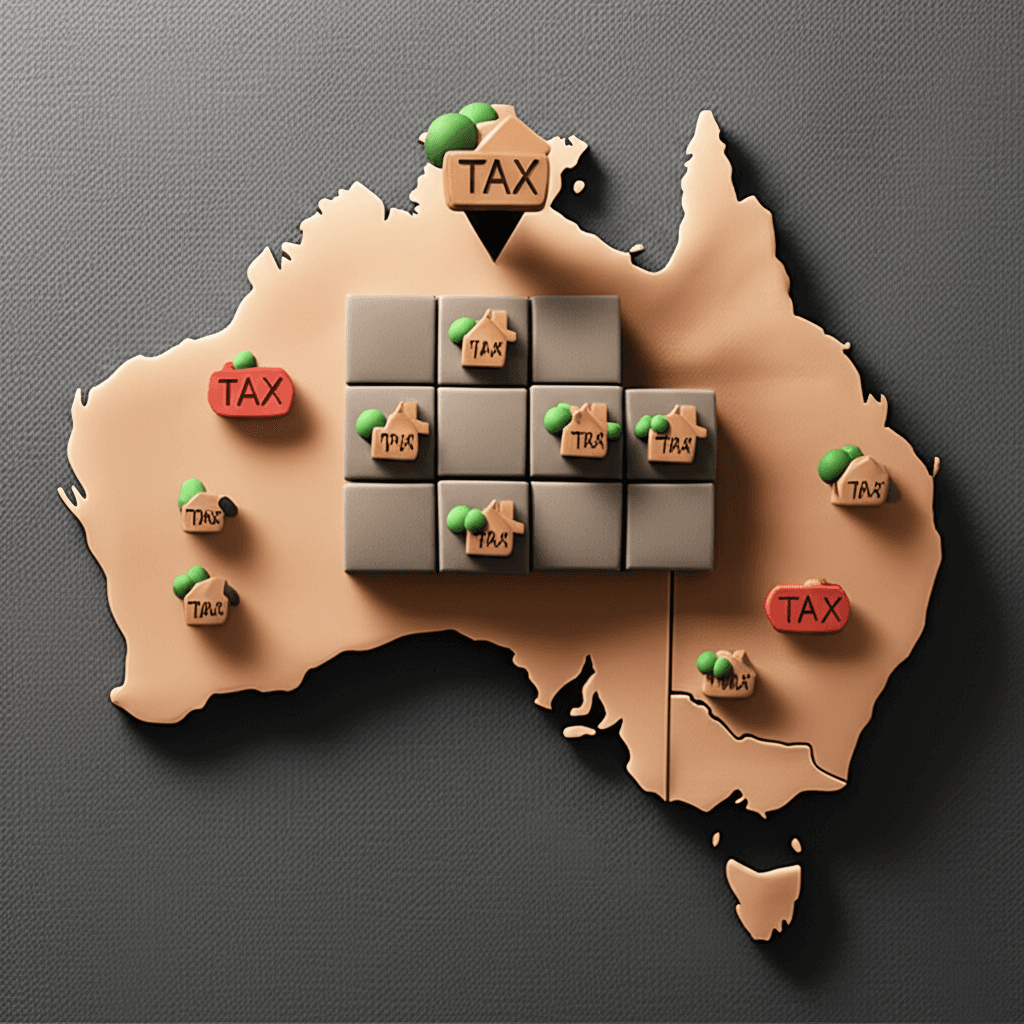Australia's Land Tax Maze: A State-by-State Guide for Investors
Understand the thresholds across NSW, VIC, QLD and beyond, and learn why diversification is the key to a healthier property portfolio.

Introduction
Navigating the Australian property market involves understanding a variety of costs beyond the purchase price. One of the most significant ongoing expenses for investors is land tax. This state-based tax can accumulate quickly, especially for those building a substantial portfolio in a single state. Understanding how land tax works, its state-specific thresholds, and how to strategically manage it is crucial for maximising your investment returns. A well-considered strategy, focusing on diversification, can prevent you from paying unnecessary taxes and unlock greater profits.
What is Land Tax?
Land tax is an annual tax levied by state and territory governments on the unimproved value of land you own. It's important to note that it generally does not apply to your principal place of residence (PPOR), or your main home. This tax is specifically targeted at investment properties, including vacant land, holiday homes, commercial properties, and residential investment units. The amount you pay is calculated based on the cumulative value of all the investment land you own within a particular state as of a specific date, usually the 31st of December each year. Once the total value exceeds a certain tax-free threshold, you begin paying land tax on the excess amount.

Australian Land Tax Thresholds: A State-by-State Breakdown
Land tax rates and thresholds vary significantly across Australia. This disparity is a primary reason why savvy investors diversify their portfolios across different states. Here’s a summary of the general thresholds for individuals in major states.
New South Wales (NSW) In NSW, there is a general tax-free threshold of $1,075,000 for the 2024 land tax year. Once your land value exceeds this, you pay $100 plus 1.6% on the value above the threshold, up to the premium threshold. Properties held in certain trusts or by foreign owners are subject to different rules.
Victoria (VIC) Victoria has one of the lowest starting points for land tax. The general threshold is just $50,000. For land holdings between $50,000 and $100,000, a flat rate applies. Above $100,000, a tiered system of rates and fixed charges kicks in. Recent changes have made Victoria a more expensive state for landholders, reinforcing the need for careful portfolio planning.
Queensland (QLD) For individuals in Queensland, the tax-free threshold is $600,000. For land valued above this, the rate starts at $500 plus 1 cent for each dollar over $600,000. It's crucial to note that properties held in companies or trusts have a much lower threshold of $350,000.
South Australia (SA) South Australia offers a general tax-free threshold of $732,000. Once this is exceeded, a tiered marginal rate system applies.
Western Australia (WA) The threshold in Western Australia is $300,000. A tiered rate system applies for land holdings valued above this amount.
Tasmania (TAS) Tasmania's tax-free threshold is set at $125,000, with marginal rates applied to land values exceeding this figure.
Australian Capital Territory (ACT) The ACT operates differently, with a fixed charge system rather than a tax-free threshold. Land tax is payable on all investment properties, with rates determined by the average unimproved value of the land.

A Strategic Approach: Look Beyond the Tax Bill
While minimising tax is important, it should not be the sole driver of your investment strategy. A common mistake is avoiding a state like Victoria simply because of its low land tax threshold and high stamp duty. This overlooks the bigger picture. An investment property in a high-growth corridor could outperform a property in a state with lower taxes by a significant margin. For example, a property growing at an additional 2% annually will generate far more wealth through capital growth than you would save in land tax. The key is to focus on the net outcome after all costs and growth are factored in.
Making these decisions requires robust analysis of market cycles, supply and demand metrics, and growth indicators. By leveraging powerful tools, you can identify which markets are poised for growth, ensuring your capital is working as hard as possible. HouseSeeker's suite of analytics can help you compare suburbs and uncover opportunities that align with your long-term goals. To make truly informed choices, explore our Real Estate Analytics Hub.
Diversification: The Ultimate Portfolio Protection
Diversification is the most effective strategy for managing land tax and overall portfolio risk. By spreading your investments across multiple states, you can take advantage of each state's individual tax-free threshold. Instead of concentrating $2 million of land value in NSW and paying a substantial tax bill, you could hold assets in NSW, QLD, and WA, potentially staying under the threshold in each and paying little to no land tax.
Furthermore, diversification protects you from regulatory changes. As seen in Victoria, governments can alter tax rules. If your entire portfolio is in one state, such a change could drastically impact your cash flow overnight. A geographically diversified portfolio mitigates this risk, ensuring that a policy shift in one location doesn't derail your entire investment journey. A personalised strategy, guided by intelligent tools, can make this complex process simple. An AI Buyer's Agent can help you identify opportunities across the country that fit your specific criteria.

Conclusion
Land tax is a critical expense for Australian property investors, but it's a manageable one. The key takeaways are clear: understand that thresholds vary significantly by state, your PPOR is exempt, and focusing solely on tax avoidance can lead to poor investment choices. The most powerful strategy is diversification, which not only minimises your tax burden but also reduces risk and exposes you to different growth cycles. By prioritising high-growth assets identified through data-driven research, you can build a resilient and profitable property portfolio where land tax is simply a calculated cost of doing business.
Ready to build a smarter, diversified property portfolio? Explore HouseSeeker's Real Estate Analytics Hub to uncover data-driven insights and find your next high-performing investment.
Frequently Asked Questions
Do I have to pay land tax on my own home?
No. In all Australian states and territories, your principal place of residence (PPOR) is exempt from land tax. The tax is designed to apply to investment properties, including land where you intend to build an investment.
Why shouldn't I just invest in the state with the highest land tax threshold?
Focusing only on the tax-free threshold is a short-sighted strategy. A state with a high threshold might be at a different point in its property cycle or offer lower capital growth prospects. The potential for capital gains in a well-chosen market will almost always outweigh the savings from a higher land tax threshold. A holistic, data-driven approach is essential.
How does owning property in a trust or company affect land tax?
Owning property through a structure like a company or trust can significantly change your land tax obligations. In many states, these structures are not entitled to the general tax-free threshold, meaning you may have to pay land tax from the first dollar of land value. It is vital to seek specialised advice from an accountant to ensure your ownership structure aligns with your investment goals.
